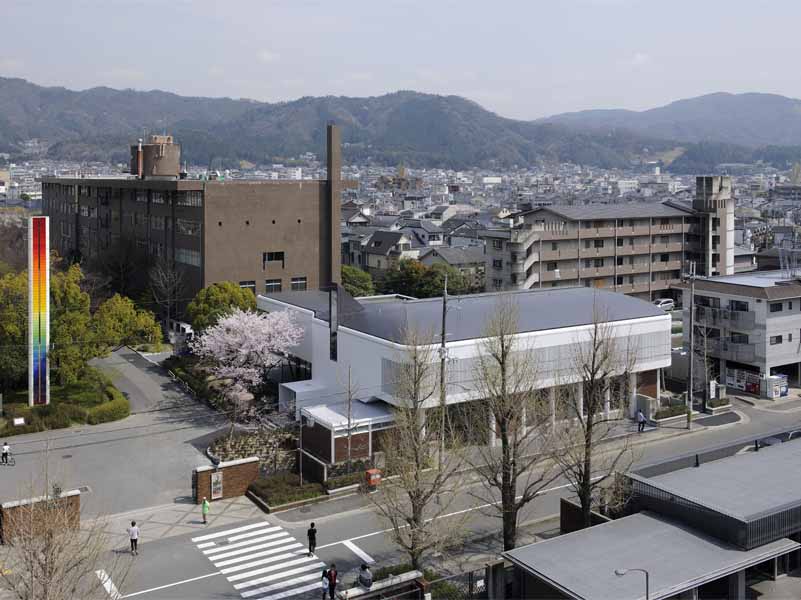

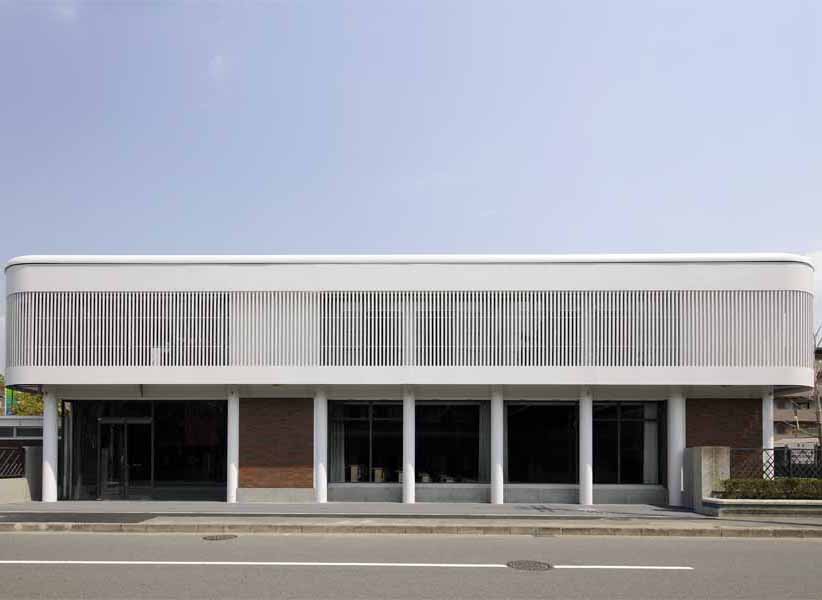
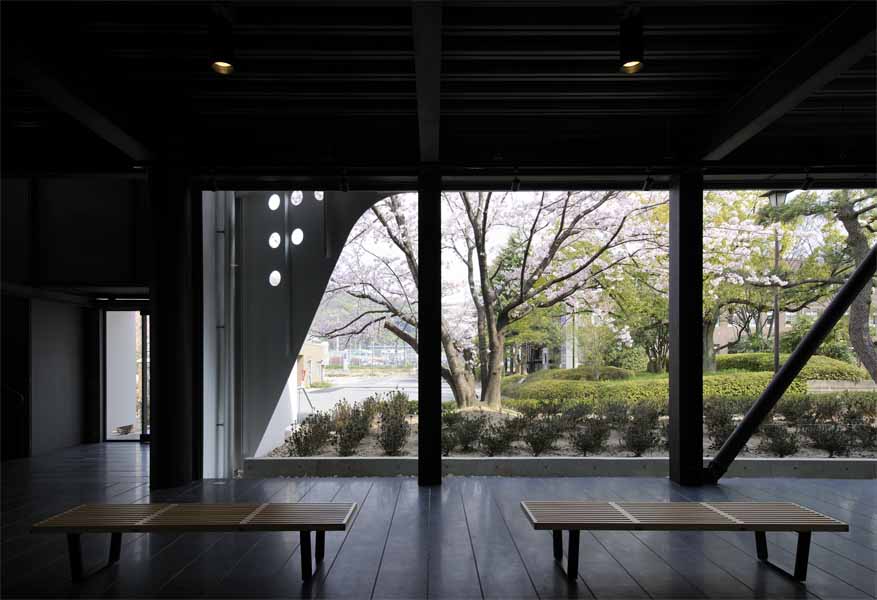
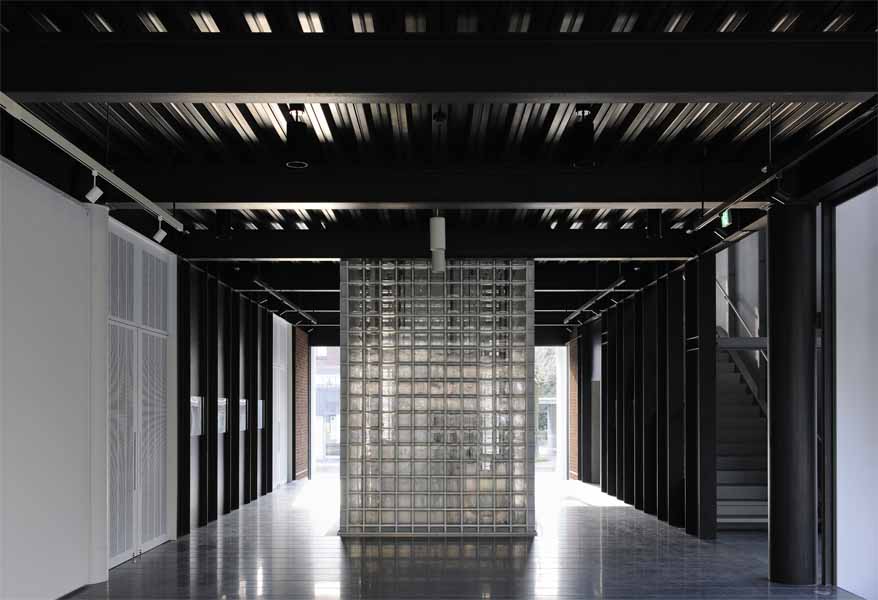
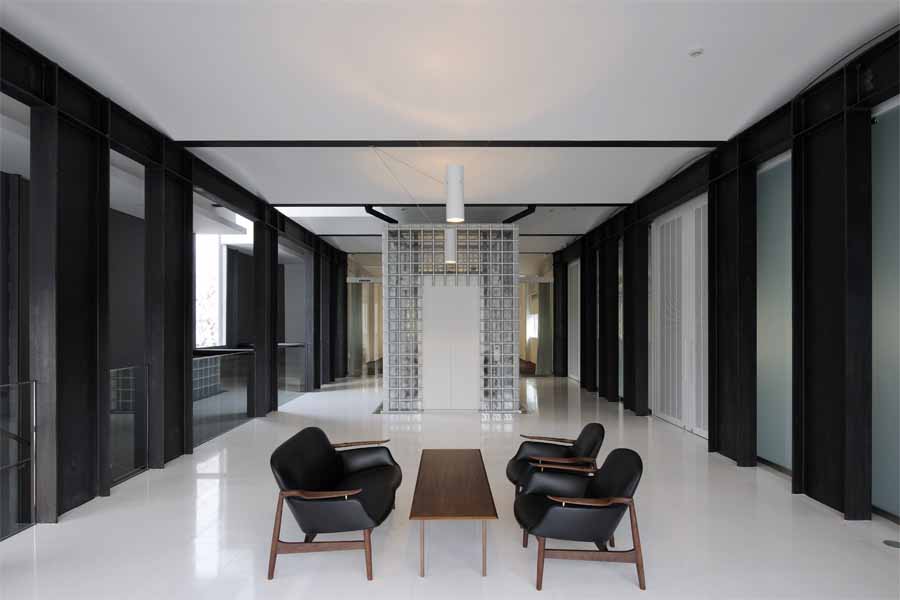
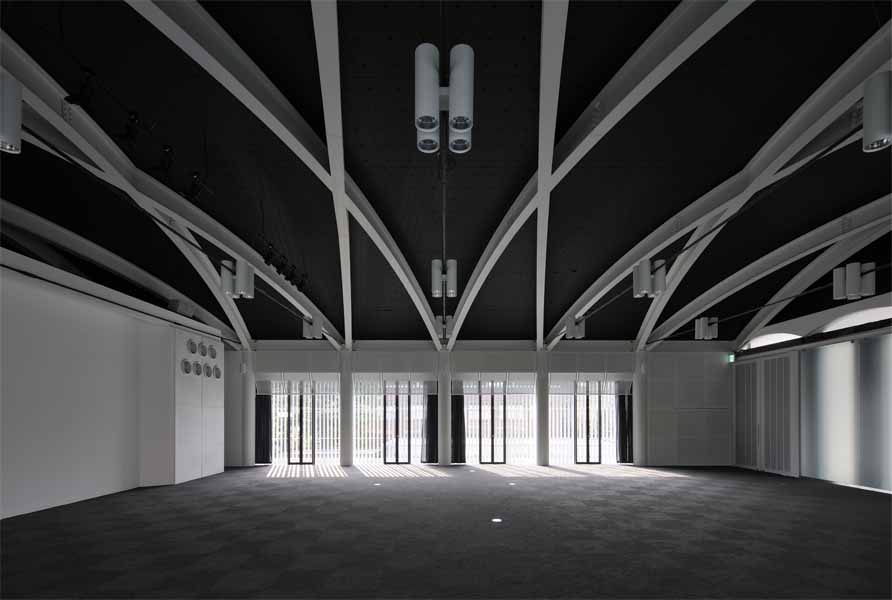
Kyoto Institute of Technology '60th Anniversary Hall'
2009.04-2010.03The ‘60th Memorial Hall stands symbolically before the main entrance of the University. The building is located along the axis of existing school building, leaving space for existing trees planted along the street. The ground floor consists of the memorial hall, lecture hall and a gallery. The first floor consists of big and small seminar rooms and a foyer. A part of school’s external wall has been removed so that the building could have a direct access from outside and be open to public.
I have chosen “time” as the main theme of this memorial hall, and tried to design “a space that captures time, and let us re-cognize the past.” In other words, in architecture, some concept and techniques are inherited from the past while some gets lost. Architecture consists of many aspects such as sensitivity, memory and symbolism.
The original school buildings were designed by Seigo Motono and were made of massive reinforced concrete. It was the style that once called “architecture of new generation”. It somewhat reminded me of the transparency of Fagus Factory and Bauhaus building designed by W. Gropius. It was an ideal image of a University of the time and a figure of future design school with countless possibilities for modern design.
They say contemporary architecture is fading. However, works of unknown artisans give life to architecture. As we walk through a building, it stimulates our senses, touches our heart, and gives sense of respect. Great buildings I have encountered till now have always transmitted these kind of feeling directly to my body. This kind of buildings deserves to be left as a heritage. Design process of this building made me caught up in such thought.
I deliberately chose details and materials for the new memorial hall and decided to use steel as a “contemporary” material in contrast with old school building designed by Seigo Motono.
- Location
- Matsugasaki,Sakyo-ku,Kyoto
- Photography
- Sugino Kei